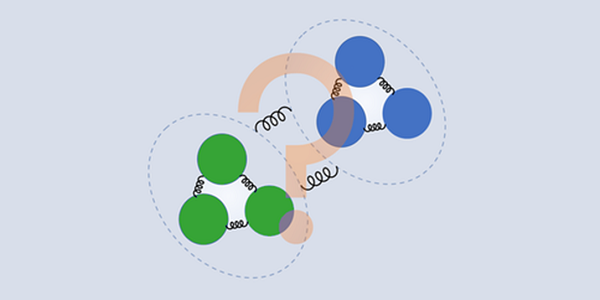BESIII Experiment Observed the New Evidence of Proton-antiproton Bound State
In the universe, proton is one of the fundamental particles that make up the atomic nucleus, while the antiproton is the antimatter counterpart of proton, having the same mass but with opposite charge. When a proton annihilates with an antiproton. A large amount of energy will be produced. However, some of theorists predicted that proton and antiproton can combine through strong interaction forming a short-lived state known as proton-antiproton bound state.
The search for new types of hadronic states, such as nucleon-antinucleon bound states, is an important goal in high-energy physics experiments. Even before the birth of Quark Model, the renowned physicists Prof. Enrico Fermi and Prof. Chen-Ning Yang suggested the possible existence of nucleon-antinucleon bound states.
There is an accumulation of evidence for anomalous behavior near the proton-antiproton mass threshold, e.g., J/ψ radiative decays and the proton’s effective form factor determined from e+e-→p`p, exhibiting a narrow peak or a very steep falloff around the p`p mass threshold, which inspired many speculations and renewed the interests on the nucleon-antinucleon bound state.

Fig. 1: A portrait of nucleon-antinucleon bound state
In 2013, BESIII experiment, while studying the process of J/ψ particle decaying into a photon and six π mesons, first discovered a new resonance structure X(1840). Its mass is quite close the proton-antiproton mass threshold, but slightly below that threshold. The further investigation on this resonant structure is crucial to understanding its nature. At present, BESIII experiment has collected 10 billion J/ψ events, which is 50 times larger than the subdata sample used in the previous measurement, offering a unique opportunity for exploration of the line shape of X(1840).
Recently, BESIII experiment has observed for the first time an anomalous structure in the 3(π+π-) mass spectrum. The study revealed that this anomalous structure is formed by the superposition of two resonant structures. In addition to the already discovered X(1840), there is a new resonant structure, named X(1880), with a mass and width of 1882.1±1.7±0.7 MeV/c2 and 30.7±5.5±2.4 MeV, respectively, with a statistical significance exceeding 10 standard deviations. The mass of this new resonant structure is slightly heavier than the sum of a proton and an antiproton, and its properties are very similar to a proton-antiproton bound state, providing new experimental evidence for the existence of proton-antiproton bound states. After publishing on April 9th, 2024, in "Physical Review Letters" [Phys. Rev. Lett. 132,151901 (2024)], this observation was selected as "Featured in Physics", and was also reported as news by the American Physical Society with a title of "Evidence of a new subatomic particle".
Further readings:
The PRL publication: https://journals.aps.org/prl/abstract/10.1103/PhysRevLett.132.151901
America Physical Society news: https://physics.aps.org/articles/v17/s37
Contact Information
Ms. JIA Yinghua
jiayh@ihep.ac.cn